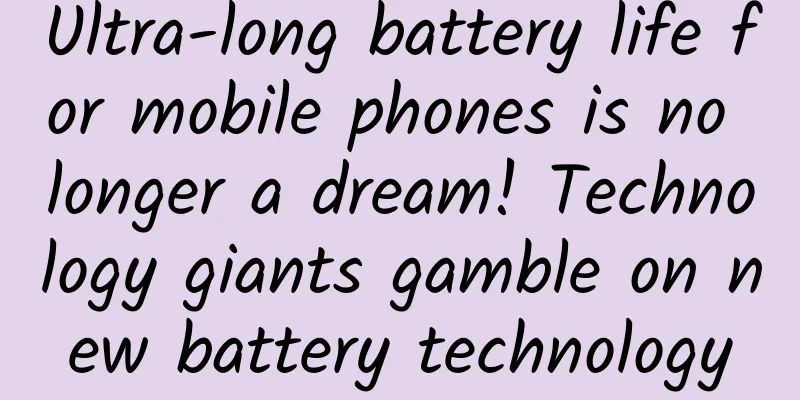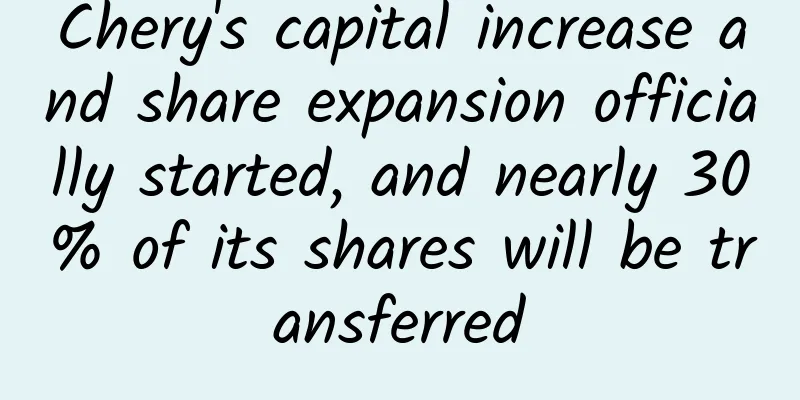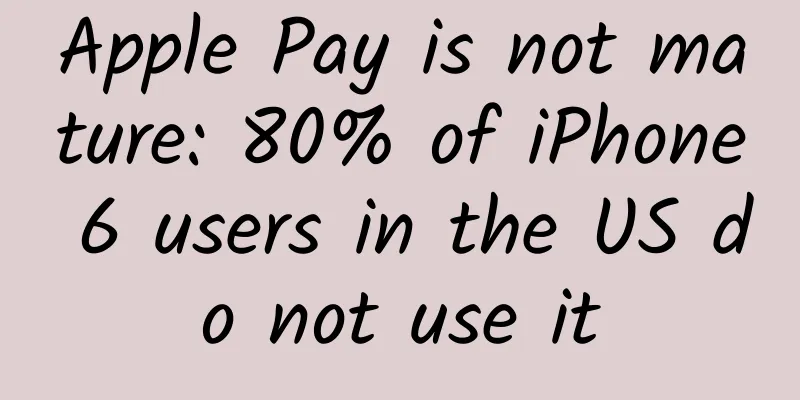Ultra-long battery life for mobile phones is no longer a dream! Technology giants gamble on new battery technology

|
Beijing time, April 16, Bloomberg News wrote today that in order to meet the electricity needs of Tesla electric vehicles, Elon Musk has invested $5 billion to build a new battery factory in Nevada. In fact, Microsoft founder Bill Gates was very interested in the new generation of battery technology as early as 2009, and invested in a new battery development company two years later. The participation of technology giants such as Gates and Musk has made the competition for the new generation of battery technology more intense. The following is the full text of the article: Professor Donald Sadoway still remembers a chuckle-inducing email he received in 2009 from a sender claiming to be a representative of Bill Gates. The email said Gates had seen Sadoway's book Introduction to Solid State Chemistry online, and the world's richest man wanted to know if he could meet with Sadoway the next time he was in Boston. "I thought it was just a student prank," said Sadoway, who teaches a popular course at MIT and has spent more than a decade studying a variety of metal materials in order to find a cheap, long-lasting battery that would allow humans to completely move away from non-clean energy. He had almost forgotten about it if Gates' assistant hadn't sent another email asking Sadoway to respond. Gates invests in new battery developer A month later, in Sadoway's office on the MIT campus, he and Gates exchanged ideas about how to curb climate change. They discussed the progress of batteries in helping solar and wind power compete effectively with fossil fuels. Gates said he could call Sadoway whenever he was ready to start his own business. "He promised to invest in the company I was starting, and it would have been a very difficult journey without his help," Sadoway said. Sadovy is ready. He and other scientists, backed by startups and big-name investment firms, are trying to solve a thorny problem: how to store and deliver energy around the clock so that renewable energy can adequately replace fossil fuels. How these storage projects can free utility customers from dependence on the transmission grid was one of the topics debated at the Bloomberg New Energy Finance conference in New York this week. Today's nickel-cadmium and lithium-ion batteries aren't up to the task. They can't power a home for hours or most cars for more than 100 miles. Such batteries cost about $400 per kilowatt-hour, and analysts say they need to be halved before green energy can be widely adopted. "Developing a storage device other than lithium is critical to unlocking the value of electric vehicles and renewable energy," said Andrew Chung, a partner at Khosla Ventures, a venture capital firm based in Menlo Park, California. The time has finally come for inventors and investors to show their talents. Last year, wind turbines accounted for 45% of new electricity generation in the United States, while solar power accounted for 34% of new electricity generation worldwide. Storing energy for times when the sun isn’t shining or the wind isn’t blowing has always been a costly undertaking. But believers in the promise of batteries say that’s changing. They’ve invested more than $5 billion in the field over the past decade in a race to bring the technology to market as quickly as possible. They firmly believe that the new batteries can store enough clean energy to meet the needs of a car, a family or an entire campus; the new batteries can store energy from wind power plants or solar power plants; they can replace generators and reduce the demand for fossil fuel power generation equipment, thereby making the power supply more environmentally friendly. Energy management consulting firm Navigant Consulting said that the market size of new energy storage equipment will increase nearly 10 times in three years to 2,400 megawatts, equivalent to the power generation of six natural gas turbine engines. Venture Capital Joins the Battery Industry Competition In 2011, Gates made good on his promise and invested an undisclosed amount in Ambri, a company founded by Sadovi. The investment helped to create Ambri. Gates declined to comment. Billionaire Nick Pritzker and his son Joby Pritzker invested in Pittsburgh-based new energy company Aquion Energy through their Prelude Ventures and Tao Invest funds. At Aquion, a Carnegie Mellon University professor is renovating a factory that once produced Volkswagen cars and Sony TVs to produce new batteries for homes and hotels. Technology from the Lawrence Berkeley National Laboratory has also received investment from venture capitalist Vinod Khosla. The three major U.S. automakers are testing lithium-polymer batteries developed by the lab that can meet the power needs of cars and homes and are expected to go on sale next year. As the United States, China and Germany work to reduce greenhouse gases, more money will be invested in this $50 billion global market. The battery market covers everything from flashlights, home solar, island power supply to grid power storage. Panasonic and LG Electronics are leading the field with their products, and many startups are following closely. "This is really a wonderful time, the power of some technologies is so strong," said Venkat Srinivasan, head of energy storage research at Lawrence Berkeley National Laboratory. Sadovy is one of the first to take the initiative. This year, he plans to ship six prototypes consisting of hundreds of liquid metal battery packs to wind and solar power plants in Hawaii, a microgrid in Alaska, and a substation for Consolidated Edison in Manhattan. When demand for electricity is low, Ambri's batteries will store Consolidated Edison's excess electricity. Then, when New Yorkers' demand for electricity increases, Consolidated Edison does not have to start another coal-fired or gas-fired power plant, but can call on the electricity stored in Ambri's batteries. Sadovich, a 65-year-old Canadian, doesn't like the image of an old inventor. Sadovich once taught students in a tuxedo with a champagne in his hand. But when he talked about batteries, he sounded like a researcher. Sadovich and a former student of his eventually perfected a tricky chemistry, and he said that thanks to this effort, Ambri's products are superior to lithium batteries in terms of price and lifespan. The battery uses two metals with different weights and melting points (Sadoway won't say what they are). He uses a layer of salt to separate them, and an electric current that heats the two metals to as high as 700 degrees Celsius allows electrons to travel through the molten salt. This helps the metals store more power. Unlike the lithium-ion batteries used in laptops, which can be recharged 400 times and last for four years, Sadoway says his battery pack can be recharged 10,000 times and last more than 10 years. Musk's $5 billion gamble Sony introduced the now-ubiquitous lithium-ion battery technology back in 1991. The batteries and their flammable liquid electrolytes have never overcome several inherent problems. They can catch fire suddenly and require toxic solutions with names like N-methylpyrrolidone. More frustrating for investors, no one has yet come up with a concrete solution to reduce prices while increasing production. Tesla CEO Elon Musk said he could accept the challenge. To this end, Musk spent $5 billion to build a large factory near a lithium mine in Nevada. Thanks to this battery factory, the price of Tesla's cheap models will drop to about $35,000 by 2017, and the range will exceed 200 miles. Currently, Tesla's most expensive Model S model costs $100,000, which means that the cost of the next generation of Tesla electric vehicles is about one-third of the Model S. Several analysts estimate that Tesla's battery costs will be less than $400 per kilowatt-hour. Musk said he hopes to reduce battery costs by 30%. Tesla declined to comment on battery prices. Critics have previously pointed out that by connecting to the entire power grid, Tesla has lost its "green label." Musk responded to this criticism by promising to provide solar panels to homes and some charging stations. In 2007, Silicon Valley venture capital firm Kleiner Perkins Caufield & Byers (hereinafter referred to as "KPCB") launched a massive campaign to eliminate lithium-ion batteries. It only asked a simple question: What kind of battery is the ideal battery? The venture capital firm, which is famous for digging out well-known technology companies such as Netscape and Google, gathered a large number of analysts and partners at its Menlo Park headquarters. According to Ray Lane, a KPCB partner, they drew up a list of "impossible product requirements" and set out to find the technology -- hopefully hidden in a chemist's lab -- to refine it and bring it to market. KPCB sent its partner Bill Joy, co-founder of Sun Microsystems, and David Wells of KPCB's green technology group to Pittsburgh. The two visited Jay Whitacre, a lanky cyclist with a doctorate in materials science. Whitacre was studying battery chemistry while teaching engineering of future materials at Carnegie Mellon. "There are only a handful of technologies that can beat lithium-ion batteries," said Raney, a former president of software giant Oracle and now chairman of the boards of Aquion and Carnegie Mellon. "Jay Whitacre is the only one who claims to be able to do it. I didn't believe him at first." Strive to reduce battery cost Whether he believed it or not, KPCB did not want to miss the opportunity. In 2008, KPCB gave Whitacre $1.6 million to speed up his research. He used an upgraded version of the salt water battery invented by Alessandro Volta, the "father of the battery" in 1800, and finally developed a new type of battery. Six months later, Whitacre, 43, was ready to take his sodium-based energy storage battery out of the laboratory at Carnegie Mellon University. He called Aquion, hoping to learn about the latter's water-soluble ion chemistry technology. Lani and his partners were so pleased with Whitacre's early research progress that they agreed to invest an additional $7 million in 2009. KPCB also helped Aquion raise $172 million from investors including Gates and the Pritzkers. Nick Pritzker is the cousin of Jay Pritzker, the founder of Hyatt Hotels Corporation, who died in 1999. As a private company, Aquion does not accept individual investments. Aquion CEO Scott Pearson said that this situation may change next year: "We are just one step away from an IPO or equity transaction." Aquion rents a three-story red brick building in a secluded part of Pittsburgh, close to where Whitakere lives and rides his bike 2.5 miles from campus. Whitakere recalls that on a February day near the Allegheny River, when a strong wind blew, he developed a new type of battery that could be used in homes or hospitals, and was the cheapest, longest-lasting, non-toxic battery. It can provide at least 8 hours of battery life and release the solar energy stored during the day. Waitakere showed off the fruits of his labor: a 28.6 kWh battery module the size of a dryer. It can power household appliances such as refrigerators, coffee machines and water heaters. Aquion's robotic equipment is hard at work 30 miles east of the red brick building. The automated equipment once packed chocolate candies, but now it hauls out lumps of carbon black and manganese powder, which are then placed in containers to be filled with brine. Now, 50 pallets of boxed batteries are on their way to the Big Island of Hawaii, ready to power an 8-acre building owned by Earl Bakken (inventor of the external wearable pacemaker). They will store the electricity generated by 512 solar panels, replacing the propane engine. Waitakere is racing to produce enough batteries to hold 200 megawatt-hours of electricity. Initially, he plans to sell the electricity to locals using diesel generators. “Islands and microgrids are the first important markets for our product,” he said. Aquion currently has just one production line, and the company hopes to eventually add four more. Aquion CEO Persson said this could potentially drive battery costs down to as low as $100 per kilowatt-hour. The race to develop new battery technology Chemical engineer Hany Eitouni is also trying to produce such cheap batteries using a technique he invented at Lawrence Berkeley National Laboratory. Eitouni's porous materials allow electrons to flow into the new dry lithium battery. Khosla Ventures and Samsung Venture Investment have invested $17 million in Seeo, where Eitouni works. The company has received more than $42 million in venture capital since 2007. Ettouni, 37, said his latest lithium-ion polymer battery, which is the size of a briefcase, can store two to three times more energy per unit weight than today's liquid lithium batteries. This storage capacity is critical for electric vehicles that can travel more than 200 miles per charge. In addition, Ettouni said his solid polymer battery loses less energy in the form of heat, which is a common problem with the current generation of lithium-ion batteries. As fog began to settle over the East Bay Industrial Park, Seeo technicians in white coats and protective goggles began handling harsh chemicals used to clean the metal at the heart of the battery. Multiple machines rolled 40 layers of lithium metal foil into a cylinder with two polymer layers that were extruded into a pouch. Ettoni boasted that his battery's passing score was "in the 90s." Seeo CEO Hal Zarem said that in the next few years, as it applies its best designs to full-scale production, Seeo expects to reduce battery costs to less than $100 per kilowatt-hour. Jeremy Neubauer, a senior engineer at the Transportation Technology and Systems Research Center of the National Renewable Energy Laboratory, said: "As production scales up, Seeo's batteries will be very cheap." Phil Giudice, Ambri CEO, said that thanks to investments from some of the biggest names in technology, new batteries will eventually make renewable energy competitive with fossil fuels. "Khosla, Gates, Musk, the Pritzkers, they are all working to make the world a better place and are excited about the prospect. They are achieving the seemingly impossible," Giudice said. "Every day that passes, we are one step closer to that goal." As a winner of Toutiao's Qingyun Plan and Baijiahao's Bai+ Plan, the 2019 Baidu Digital Author of the Year, the Baijiahao's Most Popular Author in the Technology Field, the 2019 Sogou Technology and Culture Author, and the 2021 Baijiahao Quarterly Influential Creator, he has won many awards, including the 2013 Sohu Best Industry Media Person, the 2015 China New Media Entrepreneurship Competition Beijing Third Place, the 2015 Guangmang Experience Award, the 2015 China New Media Entrepreneurship Competition Finals Third Place, and the 2018 Baidu Dynamic Annual Powerful Celebrity. |
<<: You can tell whether the battery is new by dropping it
>>: First experience of watching TV series while charging
Recommend
iOS Developer Account Summary
I have previously written an article titled "...
Tencent enters India, and its biggest rival turns out to be a Chinese company
The Indian Internet is being divided up by two Ch...
How about Minsheng Life Insurance: What challenges do you often encounter as an SEO optimizer?
When you are in the search industry for a long ti...
The battle for smart home is on the rise again. Can Apple win with HomeKit?
According to foreign media reports on June 5, sin...
The "Nine-grid" traffic light is a misunderstanding! What happened to the traffic lights to become like this?
Recently, the "Nine-grid" traffic light...
iOS 14.7.1 is released urgently, all users are recommended to update
[[413443]] Repair Watch Unlock On the day when th...
Teach you to write a super simple swoole chat room in five minutes
I was originally planning to continue writing my ...
Understand these 5 types of activity classification to make operations more efficient
Clarifying the purpose of an event should be the ...
How to select hot topics for new media!
It is probably not easy for a new media person to...
Drinking 3L of Coke every day for ten consecutive years, what happened to this outrageous person?
This man drinking diet cola is my leader’s leader...
E-commerce operation: 2 ways to play social e-commerce
This question comes from a supplementary question...
How to improve the click-through rate of Guangdiantong ads? A few simple tips to teach you how to apply what you have learned.
When it comes to optimizing click-through rate , ...
Is the hypertension vaccine good news for people with hypertension? Why are cardiologists not optimistic?
Many people consulted me and asked when the hyper...
Smart driving for all, the ultimate king bomb! The second-generation Yuan PLUS Smart Driving Edition starts at 115,800 yuan and has been reduced in price!
On March 5, BYD's second-generation Yuan PLUS...
Why was the paper of this Zhejiang female scientist cited by an academician of the French Academy of Sciences? New targets and new strategies will illuminate the future of childhood tumors
Reporter Weng Danni Photographer Jin Jingxin Publ...









